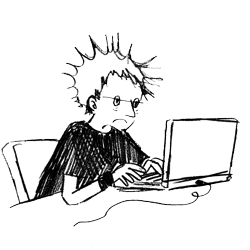It is about the Invisible Commons, every programmer – from hobbyists hacking together weekend scripts to the coders inside Microsoft, Google, Meta – relies on open-source software. It’s the compost layer under everything. Between 70% and 90% of every app, service, and system we use is built on shared, public #FOSS code. Nobody starts from scratch, everyone pulls from libraries on GitHub/GitLab, built and maintained by people who believe in the commons.
Developers spend two-thirds of their time adapting open code to their needs. This means when there’s a flaw in that shared layer, everyone is exposed, from the #dotcons: Apple, Meta, governments, banks, critical infrastructure., to native grassroots projects. That’s the reality, the real digital world runs on a fragile but beautiful commons.
The problem is the same old one, everyone depends on it, nobody feels responsible for it. This is classic #deathcult economics. Extract, use, profit, but don’t maintain the foundations because maintenance isn’t “exciting” or “competitive.” Just like bridges or water systems, nobody “important”, no elitists, cares until they collapse.
Open-source developers have been holding this mess together for decades in their spare time, after work, unpaid, because they care. That’s the horizontal path. But the vertical world -companies, governments, institutions – have been happy to feed from that commons without nurturing it.
This is where the idea of supporting projects like the #OMN comes in, to build out, public stewardship of the shared digital foundations we all rely on.
We as people need to wake up from our denialism of digital abdication fugue dispar, its common sense that software is infrastructure, as critical as roads, bridges, or power grids. Neglect it, and society festers and stumbles to collapse in slow motion. The #OMN has been saying this for 30 years.
To keep the digital commons alive, we need to become the forces pulling together. Volunteers and grassroots maintainers, the people who keep the foundations alive out of care, not profit. They are the heart, but they can’t carry the whole world forever. We need people and communities or action to grow to rebuilding public digital infrastructure from the bottom up. This is as much about cultural as it is about tech.
But culture needs code, needs maintainers, need support. And right now we’re still facing the same #blocking of all of these. People and funding are needed, not corporate capture, not venture capital, not #NGO “managed change,” but real contributors who care about public-first tech. What we need to say clearly, is that open source (#FOSS) is a global commons, everyone uses it, no one truly maintains it, vertical institutions, like the #dotcons, depend on horizontal labour.
Without care, this digital ecosystem will rot, so projects like the #OMN is one path to restoring balance. On the #maisntreamin paths, yes, regulation will come, It unthinkingly has to. Companies exploiting shared infrastructure without feeding it is theft – from the public, from the future, from the commons.
The message for outreach, is if we want digital tools that are public, trustworthy, sustainable, and resilient, then we must invest in the shared foundations. We must move from #stupidindividualism to collective stewardship. From extraction to maintenance. From shiny platforms to compostable infrastructure.
The #OMN hashtag story gives us a language, the codebases give us the tools, the community gives us the power, now we need the crew to sprout the seeds. Let’s build the public digital foundations before they collapse beneath us.







